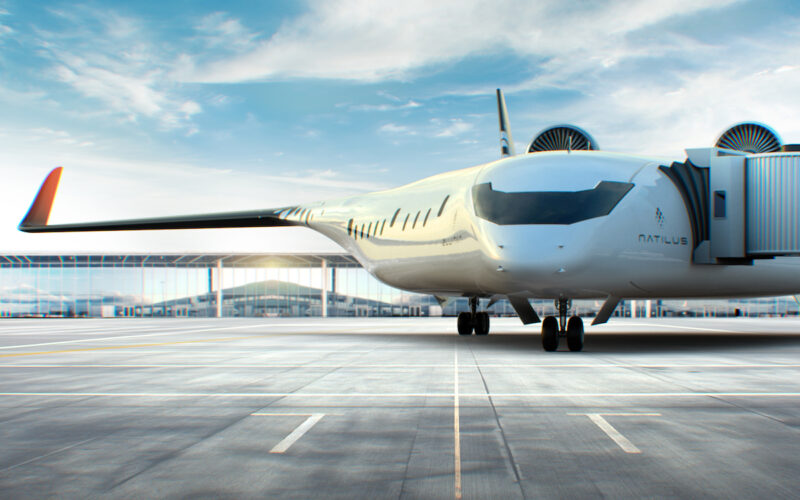Natilus, a Californian startup developing a family of blended-wing-body (BWB) freighter aircraft, announced on October 23, 2024, that it has plans to enter the passenger aircraft market and compete with Boeing and Airbus.
AeroTime spoke with Natilus founder and CEO, Aleksey Matyushev, who confirmed that the company is working on a 200-seater aircraft able to cover Transcontinental US routes as well as some Transatlantic ones, such as New York to London.
The design of this aircraft, which will be called ‘Horizon’, is based on the same blended-wing-body concept as that which Natilus has devised for cargo applications, but with some key changes to adapt it to the needs of the passenger market.
For example, the Horizon will be considerably faster than its cargo counterpart. It will be capable of cruising at speeds of Mach 0.8, compared to Mach 0.35 for the ‘Kona’, the smallest of the cargo concepts on which Natilus is working.
According to Natilus, due to its structural design, the blended-wing-body allows for a 40% increase in volume compared to a traditional wing-in-tube aircraft in the B737 or A320 category. In turn, the aerodynamic properties of this model can deliver a 50% reduction in carbon emissions and a 30% saving in fuel consumption.
Matyushev acknowledged that this project will require a large amount of capital to bring to fruition, in the order of several billion dollars. However, he highlighted two factors that he feels may present an enticing opportunity.
The first of these is the enormous size of the airliner market, with airlines expected to receive some 40,000 aircraft over the next couple of decades and the major manufacturers struggling with production bottlenecks.
By Matyushev’s estimation, even if Boeing and Airbus retain their dominant position, there may still be a 15,000 aircraft market opportunity for other players.
He also referred to the groundwork already done on its freighter concepts and to the fact that, despite working on the development of a clean-sheet aircraft, Natilus has used known and proven available technologies wherever possible, in order to simplify its certification and entry into service.
Matyushev also expressed what he sees as a view shared by many in the field – namely that the industry generally has become rather sclerotic, with the cost and amount of time required to develop new aircraft skyrocketing. Making an analogy with SpaceX and its impact in the space sector, he suggested that this is the context in which new players with a radically new approach could disrupt the industry.

